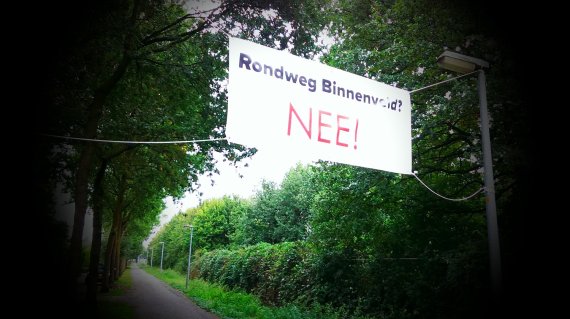This surprising turnaround comes after the latest traffic counts were incorporated in the most recent traffic model. This shows traffic increasing up to 2030, but at a slower rate than predicted by the previous traffic model. That means the option of tackling the traffic jams to and from campus using the existing roads is back on the table alongside the option of a new ring road.
The alternative to the ring road is to widen Nijenoord Allee, without using any expensive tunnels or viaducts. So the crossroads will be at the same level. Incidentally, it is still unclear whether this solution would be enough to deal with the traffic jams. The province says ‘it cannot be ruled out in advance’ that this would be enough to resolve the accessibility problem.
This will allow a fair comparison of two alternatives.
Peter de Haan, Wageningen councillor
The Wageningen councillor responsible for transport Peter de Haan (Christian Union party) is more optimistic. In a memo to the council, he writes that the alternative ‘should be possible in terms of traffic flows’. At any rate, the provincial executive sees sufficient reason to assess the environmental impact of both routes. A choice will then be made in the spring for a route that will be worked out in more detail.
De Haan is pleased the province will be including an alternative to the campus ring road in its environmental impact assessment. ‘That will allow a fair comparison of two alternatives. But I am still concerned about how easy it will be for cyclists to cross Nijenoord Allee. That’s an important issue for the municipality.’
The crossings at Hoevestein and Bornsesteeg are particularly problematic. Thousands of cyclists a day cross at these points. Previous plans had included overpasses for this, but they will not be built because of the cost. The question of whether students will still be able to cross quickly and safely on their way to and from campus without tunnels or overpasses still has to be answered.

 Photo of the bicycle path Dijkgraaf next to the Dassenbos. Photo: Roelof Kleis
Photo of the bicycle path Dijkgraaf next to the Dassenbos. Photo: Roelof Kleis